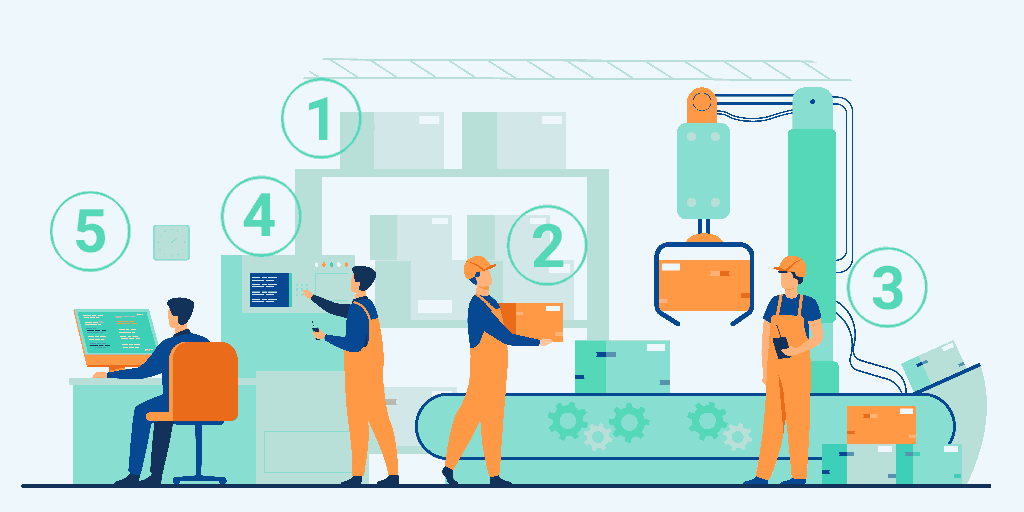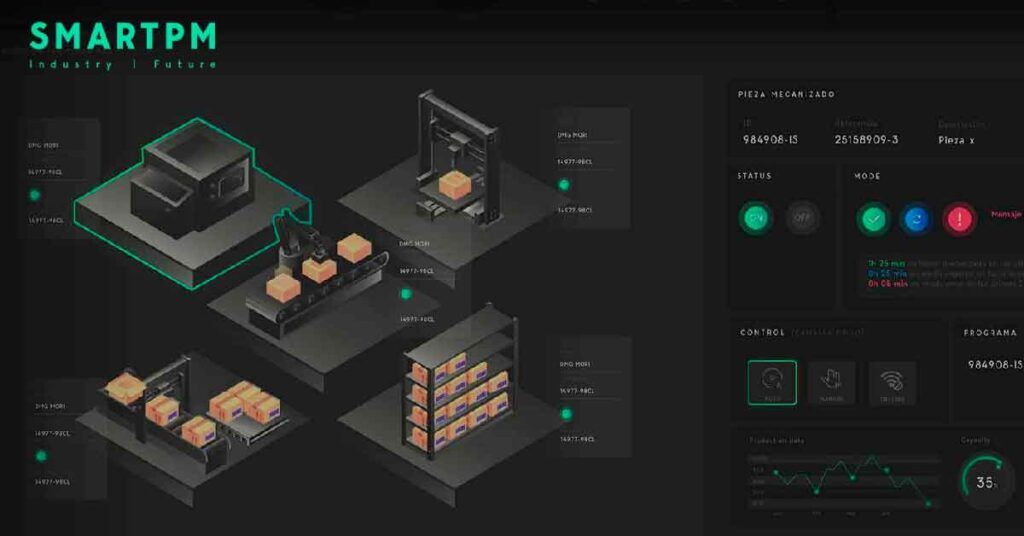If you feel that your shop floor is dominated by anarchy or if you have limited visibility into what is going on in your shop floor, stop and read this article. Having a system that provides real-time process information can help you improve your productivity. In this post we talk about this and other advantages of real-time process visibility.

What is real-time process visibility?
Real-time process visibility means getting the data of the processes that are happening at the moment, without delays. This allows you to make decisions and detect problems in a much more agile and dynamic way, as we will explain later.
There is a mantra in the industry that says, "what can't be measured can't be improved." Well, real-time process visibility is something that goes much further.
We are not talking here about exporting data from a machine to Excel to analyze it the day after and realize (in the blink of an eye) the problems or deviations in production. Obtaining, analyzing and managing data in real time is a fundamental step towards understanding processes and acting on them to solve misalignments before they translate into problems, such as line stoppages or quality failures that impact productivity and profitability.
Technology today makes it possible to obtain the necessary information at the level of the entire process and in an integrative manner.
Many of the shop floor machines are capable of collecting their own data, but having independent "islands" of information does not solve anything.
Neither does storing a multitude of data without knowing what it will be used for. Even in cases where these limitations are overcome, without a hardened organization or a robust IT layer, it is difficult to achieve adequate visibility into processes.
The challenge is to obtain information at the level of the entire process and in an integrative way, including machines, sensors, IT platforms (ERP, MES, PDM/PLM, etc.) so that action can be taken in real time.
Are your processes really digitized?
The visualization of processes in real time is based on their digitization. At this point it is necessary to differentiate what are really real digital processes from wannabe processes. When we talk about real digitization of processes, we do not simply mean the elimination of paper information by scanning it, or capturing all kinds of data and storing it in the cloud without a clear criterion.
Digitization demands the creation of a digitally equivalent process to the physical one, containing all relevant and manageable tasks that occur on the shop floor in real time. This allows an integrated management of the data so that they can feed back into the process itself, making it more productive and therefore more profitable for the company.
Main advantages of real-time process visibility.
Increased productivity in processes
Imagine that one of the machines on the line has lower productivity due to a mismatch in its tool magazine.
Without real-time visibility, it would be necessary to detect the problem, collect information manually and analyze it in search of a solution. Once the adjustment has been made, another period must be waited to analyze the data and verify that the decision taken has been adequate. This process could take 2 to 3 days.
A productive system with real-time data visualization can make decisions automatically.
In a productive system with the ability to visualize data in real time, data can be collected, analyzed and distributed quickly and easily among all decision makers, or even have the system make those decisions automatically.
In the previous example, the system could detect in real time that there is a problem with the machine and look for a solution in a matter of minutes, being able to see immediately if the incident is solved. In the case of not being able to solve it automatically, it could arrange the information in such a way that the decision making by the responsible person would be faster and easier.
This time saving in decision making and verification of results leads to a significant increase in productivity. In addition, having data also allows the development of predictive actions, i.e., to anticipate situations that can be evaluated and avoided before they occur.
Improved production planning capability.
Obtaining good visibility of production is an important aid in understanding the plant's operational capacity, which is necessary for planning and scaling production to avoid delivery delays.
Real-time visibility allows knowing the process as a whole, obtaining information of the "journey" made by each part, including manufacturing times, times per machine, etc. This allows for better and more efficient production planning. It also facilitates the ability to budget and set new production commitments based on real data and not so much on "intuition".
Improved internal coordination and generation of synergies.
In order for real-time data to be used efficiently, it is necessary that this information is shared and integrated with the rest of the system in an appropriate way. This makes it easier for the entire organization to have the same data and provides a more complete view of the entire shop floor operation. This facilitates internal coordination and eliminates anarchy on the shop floor.
Digitizing a process is not simply eliminating paper-based information and storing data.
Technology makes it possible to collect and unify large amounts of data automatically. With all this information, trends and patterns can be created that will serve as a model, so that we can detect possible deviations during production and apply preventive measures dynamically.
As a consequence, unplanned shutdowns are reduced (by anticipating problems) as well as planned shutdowns, since we can perform better predictive maintenance planning.
4. Reduction of operating costs
Unplanned shutdowns are losses, and the longer they are, the greater the losses. Therefore, having the ability to anticipate problems has a direct impact on the company's bottom line, both by avoiding the shutdown itself and by reducing the production of defective items.
Real-time visualization makes it possible to identify errors, understand their causes and therefore resolve them without impacting the production plan.
5. Better positioning for continuous improvement
As we said at the beginning, what cannot be measured cannot be improved. Real-time visualization systems allow more accurate and consistent data collection , which is of great help in continuous improvement. For example, they make it possible to detect where material loss, non-productive movements, machine downtime, etc. are occurring. And not only that.
Having the right data makes it possible to automate operations and decision making, thus gaining in agility, time, quality, etc.
Thus, it is possible to detect which specific areas of the workshop need to be optimized, make a better distribution of resources (including personnel), optimize machine parameterization, etc.
It's time to improve your production system

SMARTPM can help you with our MIC automation platform for the machining industry. MIC allows you to centralize the monitoring and tracking of your operations in real time, so you can identify low value-added operations, improve the visibility of your equipment and workflows and have a clear traceability of your references, to mention some of its capabilities.
MIC allows you to integrate the information managed by other IT solutions you use, providing you with a true global view of the processes so that you can manage your production more dynamically in real time.
If you are interested in learning more about our MIC platform, do not hesitate to contact us. contact us.
Derived illustration: pch.vector-freepiks
